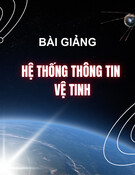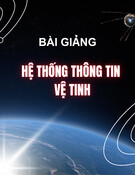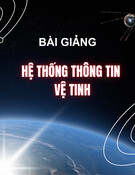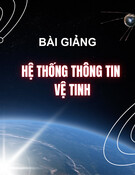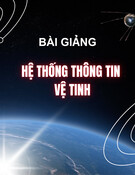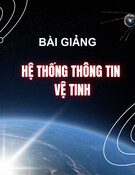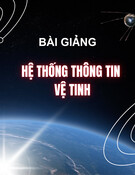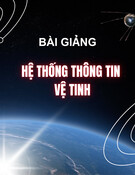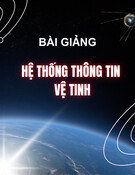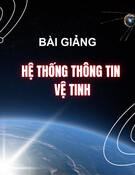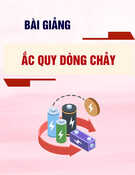
TR NG ĐI H C S PH M KƯỜ Ạ Ọ Ư Ạ Ỹ
THU TẬ
THÀNH PH H CHÍ MINHỐ Ồ
KHOA C KHÍ CH T O MÁYƠ Ế Ạ
B MÔN C ĐI N TỘ Ơ Ệ Ử
-------------------------
Đ THI CU I K H C K 1, NĂM H C 17-18Ề Ố Ỳ Ọ Ỳ Ọ
Môn: H TH NG TRUY N ĐNG SERVOỆ Ố Ề Ộ
Mã môn h c: ọSERV424029
Đ s : ề ố 01; Đ thi có 2 trang.ề
Th i gian: ờ60 phút.
Đc phép s d ng tài li uượ ử ụ ệ
Bài 1: (3đ)
a. Drawing a general diagram of a servo system for a 3-axis CNC machine using
DC servo motors.
It is similar to the figure 2.1 in the lecture note (chapter 2)
b. What are differences between semi-closed loop and full-closed loop system?
According to your diagram from (a), is it a open-loop, semi-closed loop or full-
closed loop system?
In many servo systems, a feedback system can be only established based on the
information of servo actuator. This kind of control system is called a semi-
closed loop. Otherwise, a full closed-loop is a system that feedback information
is obtained from a mechanism part
According to the diagram, it is a semi-closed loop system because there are
only feedback loops from the servo actuators.
c. Express the advantages and disadvantages of a servo system using DC servo
motors? Choose a reason that makes DC servo motors less common in
industrial applications?
Advantages:
-Smooth rotation at low speeds and capability of high speed applications (up
to 5000 RPM).
-No power used at standstill: with no static loads on the motor, no current is
required to hold position
-Wide variety of types available: being produced in many styles including
very low inertia types for high dynamic applications.
-Closed-loop control: high precision in trajectory control
Disadvantages:
S hi u: BM1/QT-PĐBCL-RĐTVố ệ 1
Full-closed loop

-Brush maintenance: limiting their use in clean rooms, and other
environments where brush dust is not acceptable.
-Poor thermal performance: all the heat is generated in the rotor, from
which the thermal path to the outer casing is very inefficient.
-Increased installed cost: the installed cost of a DC servo system is higher
than that of a stepper due to the requirement for feedback components.
The reason that makes DC servo motors less common in industrial
applications is brush maintenance
Bài 2: (4đ)
a. V s đ kh i m ch đi u khi n đng c b c l ng c c (bipolar)? Vi t l uẽ ơ ồ ố ạ ề ể ộ ơ ướ ưỡ ự ế ư
đ gi i thu t đi u khi n đng c trên 2 ch đ ồ ả ậ ề ể ộ ơ ở ế ộ “1 phase ON” và “2 phase
ON”? L i ích c a vi c đi u khi n “2 phase ON” là gì?ợ ủ ệ ề ể
H-Bridge 1
H-Bridge 2
IN 1
IN 2
IN 3
IN 4
CONTROLLER
OUT 1
OUT 2
OUT 3
OUT 4
1 phase ON
OUT1 + 0 - 0 + 0 - 0 + 0 - 0
OUT2 - 0 + 0 - 0 + 0 - 0 + 0
OUT3 0 + 0 - 0 + 0 - 0 + 0 -
OUT4 0 - 0 + 0 - 0 + 0 - 0 +
D a vào b ng trên sinh viên v l i l u đ gi i thu tự ả ẽ ạ ư ồ ả ậ
2 phase ON
OUT1 + + - - + + - + + 0 - -
OUT2 - - + + - - + - - 0 + +
OUT3 - + + - - + + - + + + -
OUT4 + - - + + - - + - - - +
D a vào b ng trên sinh viên v l i l u đ gi i thu tự ả ẽ ạ ư ồ ả ậ
Đi u khi n “2 phase ON” giúp tăng moment l c c a đng c lên kho ngề ể ự ủ ộ ơ ả
30%-40% so v i “1 phase ON”ớ
S hi u: BM1/QT-PĐBCL-RĐTVố ệ 1

b. Cho s đ kh i b đi u khi n t c đ đng c DC servo nh hình:ơ ồ ố ộ ề ể ố ộ ộ ơ ư
Đ gi m nh h ng c a vi c t c đ đt thay đi đt ng t và s nh y v iể ả ả ưở ủ ệ ố ộ ặ ổ ộ ộ ự ạ ớ
nhi u t n s cao c a khâu D, ta s d ng b đi u khi n PID s a đi nh sau:ễ ầ ố ủ ử ụ ộ ề ể ữ ổ ư
( ) ( ) ( ) ( )
1
D I
p
K s K
U s K E s s E s
Ns s
= − +
+
ω
Vi t gi i thu t PID cho b đi u khi n s b t k s d ng ph ng trình trên?ế ả ậ ộ ề ể ố ấ ỳ ử ụ ươ
Tính sai số
d
k k k
e
ω ω
= −
(2.1)
Khâu P:
P
k p k
u K e=
(2.2)
Khâu I (s d ng công th c tích phân lùi)ử ụ ứ
1
I I
k k I k
u u K Te
−
= +
(2.3)
T: th i gian l y m u (s)ờ ấ ẫ
Khâu D:
1
( )
Dk k
D
u k K T
ω ω
−
−
=
(2.4)
( ) (1 ) ( 1) ( )
D D D
f f
u k u k u k
α α
= − − +
(2.5)
V i ớ
T
T N
α
=+
(
0 1
α
<
)
S d ng các ph ng trình (2.1) đn (2.5) sinh viên vi t l i l u đ gi i thu tử ụ ươ ế ế ạ ư ồ ả ậ
Bài 3: (3đ) S d ng gi i thu t DS đ n i suy 1 cung tròn góc ph n t I, theoử ụ ả ậ ể ộ ở ầ ư
chi u kim đng h (CW), R=6.ề ồ ồ
a. L p b ng tính các giá tr c n thi t theo l u đ gi i thu t?ậ ả ị ầ ế ư ồ ả ậ
b. V k t qu ch y đc theo b ng câu a?ẽ ế ả ạ ượ ả
c. Tính sai s c a hình n i suy đc?ố ủ ộ ượ
a.
D D1 D2 D3
∆
X
∆
Y X Y
S hi u: BM1/QT-PĐBCL-RĐTVố ệ 1

0 0 1 -11 0 0
1 1 1 -11 -10 3 -11 1 0
2 4 4 -10 -7 5 -11 1 0
3 -2 9 -7 -2 7 -9 1 1
4 -4 5 -11 -4 9 -7 1 1
5 -2 5 -11 -2 11 -5 1 1
6 4 9 -7 4 13 -3 1 1
7 1 17 1 14 13 -1 0 1
8 0 14 0 13 13 1 0 1
L u ý:ư X =1 nghĩa là tăng 1 BLU theo tr c Xụ
Y= 1 nghĩa là gi m 1 BLU theo tr c Yả ụ
b.
0 1 2 3 4 5 6
0
1
2
3
4
5
6
c.
Di n tích c a ¼ cung tròn: ệ ủ
2 2
1 1 3.14 6 28.26
4 4
S R
π
= = =
Di n tích c a hình n i suy đc: ệ ủ ộ ượ
1
1
2 6 (2 6)4 28
2
S= + + =
Sai s n i suy ố ộ
1
100% 0.9%
S S
S
ε
−
= =
S hi u: BM1/QT-PĐBCL-RĐTVố ệ 1

S hi u: BM1/QT-PĐBCL-RĐTVố ệ 1

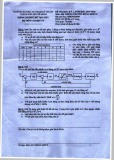
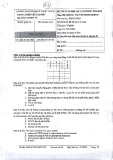
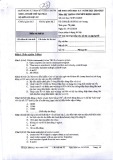
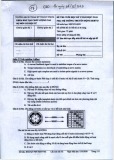

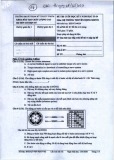
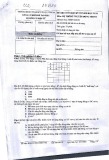
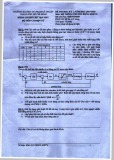
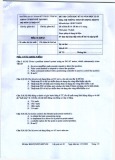
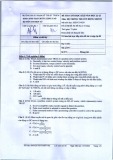
![Trắc nghiệm Mạch điện: Tổng hợp câu hỏi và bài tập [năm hiện tại]](https://cdn.tailieu.vn/images/document/thumbnail/2025/20251118/trungkiendt9/135x160/61371763448593.jpg)
